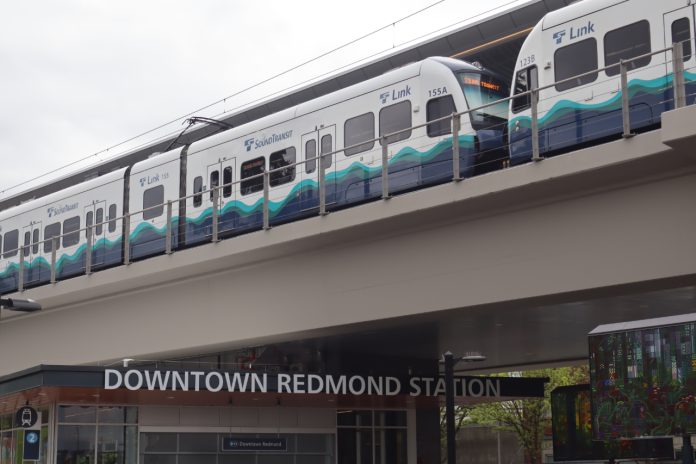
Mere weeks after Sound Transit extended the 2 Line into Downtown Redmond, the new northern terminus has become the most-used station on the entire line, according to the agency’s early data. By June, ridership at the new Downtown Redmond light rail station had quickly surpassed that of the second busiest station of Downtown Bellevue, with more than 42,000 boardings over the course of the month.
The two new stations that make up the Downtown Redmond Link Extension opened on May 10, becoming the first light rail segment from the 2016 Sound Transit 3 ballot measure to begin service. Downtown Redmond Station serves one of the region’s fastest growing neighborhoods.
While the 2 Line remains disconnected from the more highly used 1 Line until sometime in 2026, ridership had already been exceeding modest expectations. With the new extension, it has kicked into an even higher gear.
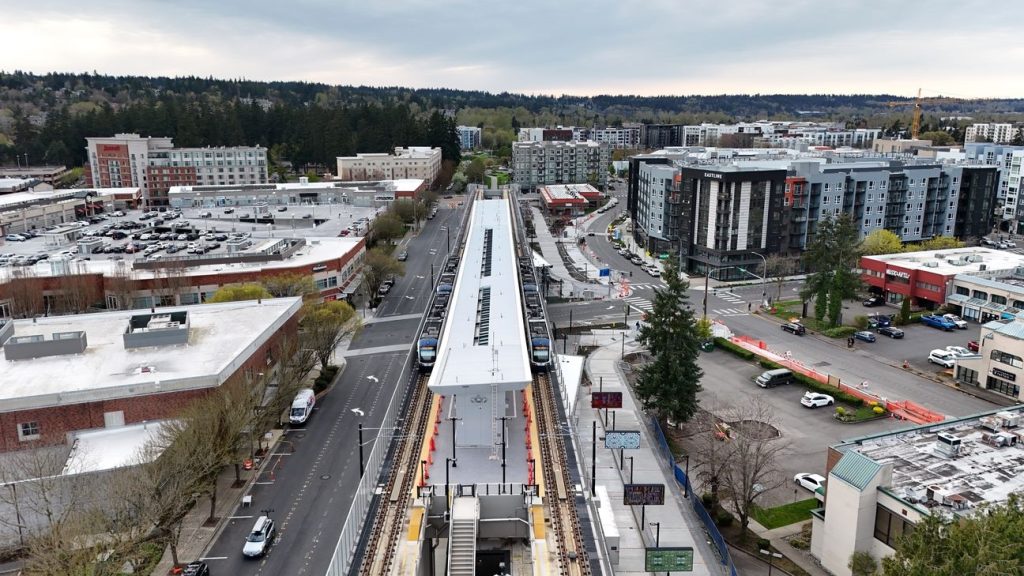
The new park-and-ride oriented Marymoor Village Station, by contrast, has settled into a modest third-to-last place in terms of ridership. While the City of Redmond has primed the area around that station for significant future housing growth, the 1,400-stall parking garage remains its main draw. In contrast with South Bellevue Station, that hasn’t translated to significant ridership, likely in part because South Bellevue also remains a major bus transfer point for trips to Seattle.
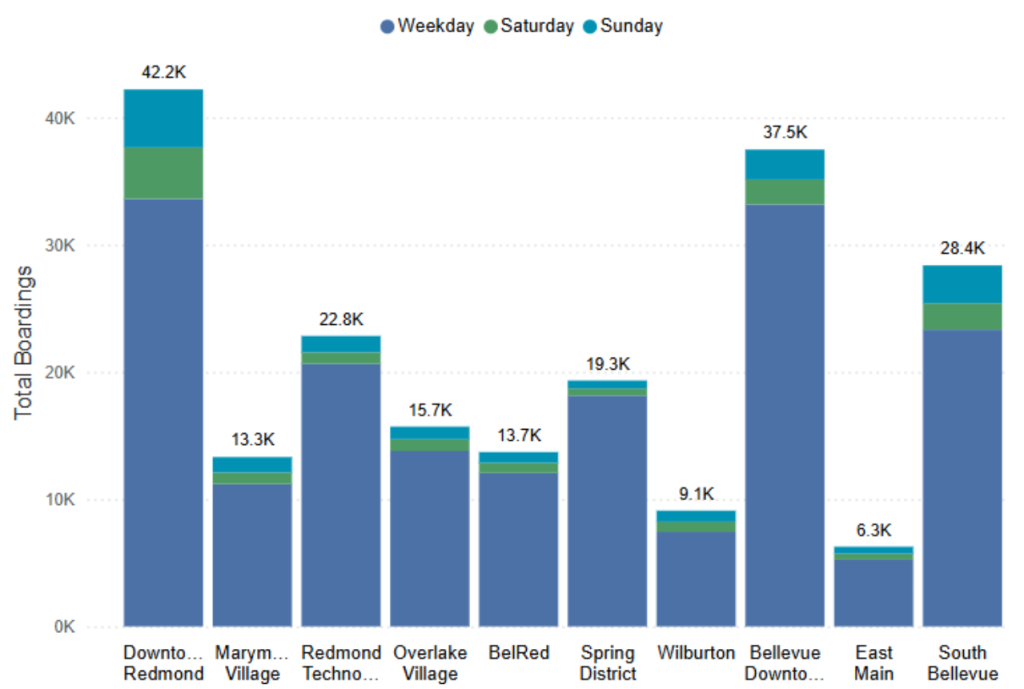
The two new stations combined are taking the Eastside’s light rail line to new heights. In both May and June 2025, ridership on the 2 Line exceeded 200,000 riders, with average daily boardings more than doubling between April 2024 and June 2025, from around 3,500 to around 8,500. Days where ridership exceeded 10,000 were a rarity before Downtown Redmond Link opened… now they’re a regular occurrence.
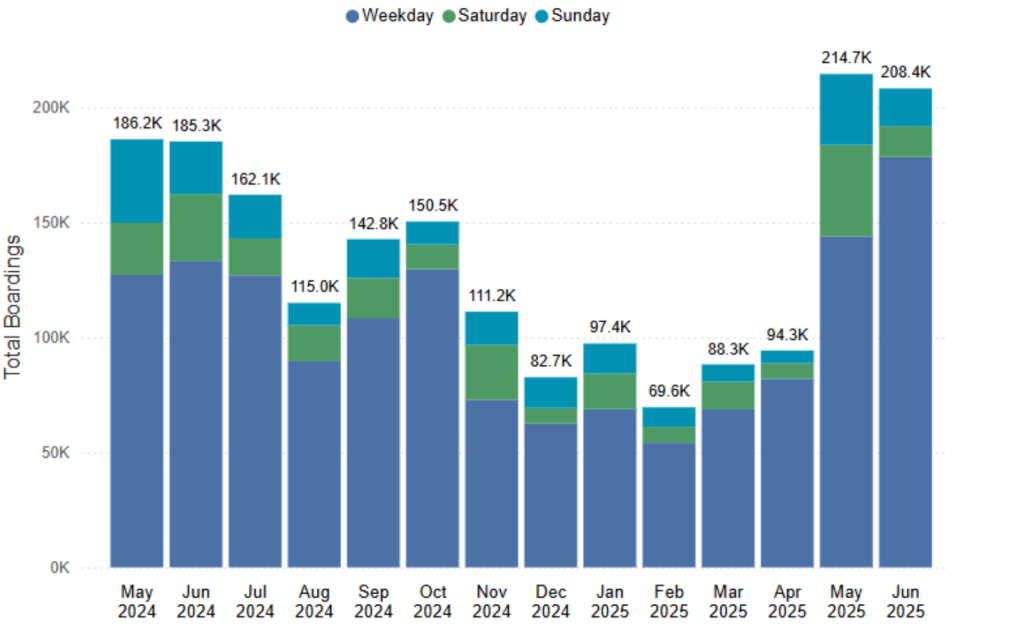
“In the 12 months following the 2 Line’s opening weekend, we crossed the 10,000 daily boardings threshold a total of four times. In the single month following the opening of the Downtown Redmond extension, ridership has crossed the 10,000 daily boardings threshold a total of 15 times,” Raj Cheriel, Sound Transit’s Director of Essential Data and Analytics, told the board’s rider experience committee this week.
Meanwhile, 1 Line ridership has been climbing as well, averaging more than 100,000 daily boardings since April and hitting a new high of 109,262 daily boardings in June. Previously, October 2024 had been the only month to exceed 100,000 daily boardings.
Weekend ridership on the 2 Line remains relatively low, compared to the 1 Line where Saturday ridership regularly matches an average weekday, buoyed by sporting events and concerts. But the 2 Line is definitely becoming a real mobility tool for weekday travelers in particular, for commute trips and other types of errands. Event service to concerts at Marymoor Park, which features extended hours of operation, is also drawing riders to the system.
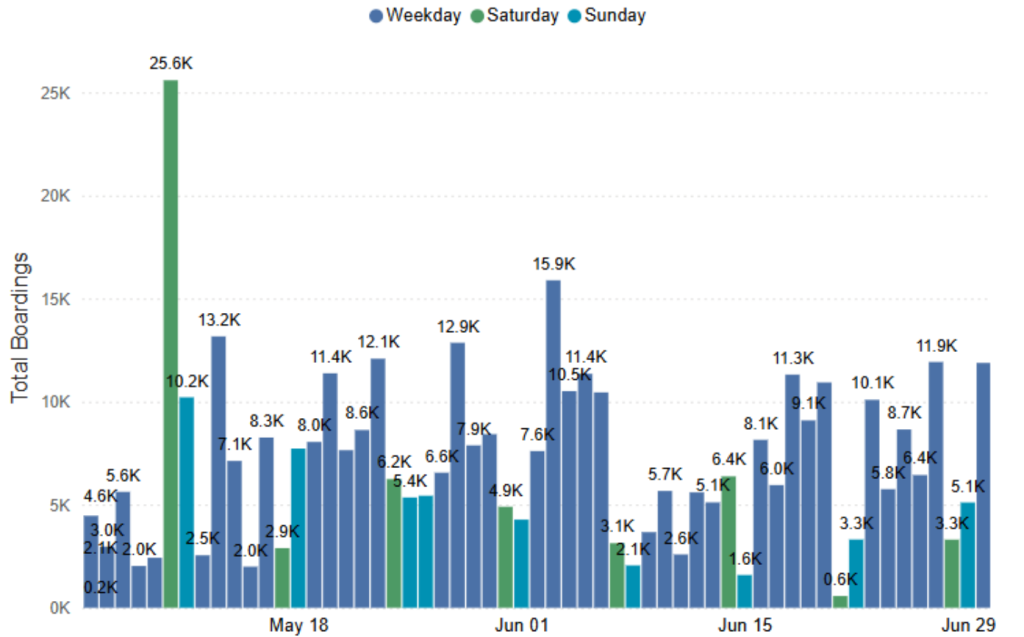
Unsurprisingly, boardings have shifted away from Redmond Technology Station, which had been the 2 Line’s northern terminus up until May 10, to the new terminus at Downtown Redmond. But the growth in overall ridership dwarfs those shifts, according to the data.
“Since the new boardings at the Downtown Redmond station are significantly greater than the reduction of boardings at the Redmond Technology Station, this could mean there was, and maybe still is, a latent demand for Link service even further east,” Cheriel said.
While these remain early numbers, they’re a strong indication that the strengths of Downtown Redmond as a station that’s fully integrated into one of the Eastside’s fastest-growing neighborhoods is paying off. Compared to Downtown Bellevue, which was the subject of an intense siting fight that resulted in a station location less central to downtown amenities and closer to I-405, Downtown Redmond is right in the middle of everything, a few minute’s walk from hundreds of homes.
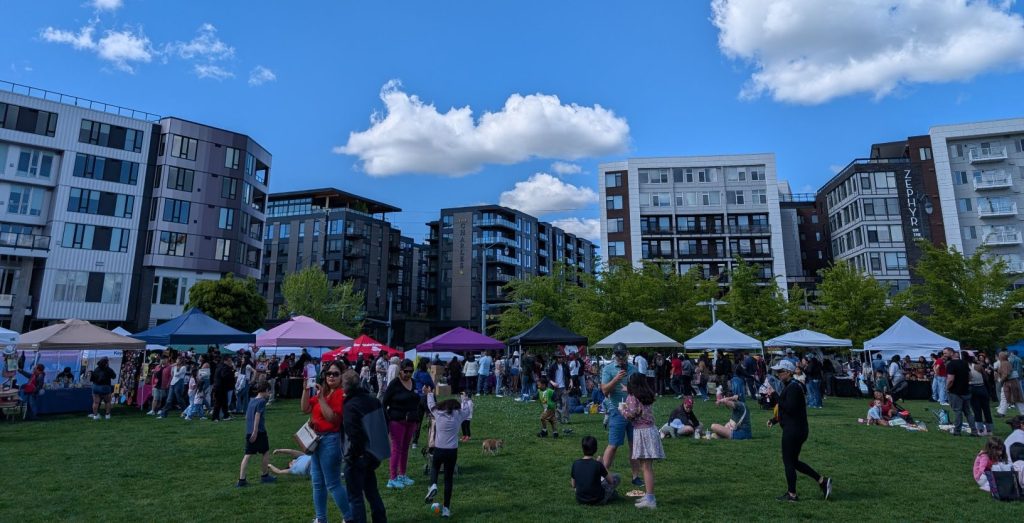
Urban stations like Downtown Redmond aren’t an anomaly on the broader Link light rail system of course — stations like Capitol Hill, U District, and Roosevelt have become some of the busiest 1 Line stations. But it is an anomaly for a terminus, given the fact that most other final stations, including Angle Lake and Lynnwood, are paired with significant amounts of parking. This apparently threw Sound Transit staff for a loop when reviewing the data, though it’s not a surprise to transit advocates who know one of the most sustaining sources of transit ridership is significant housing density.
“Terminus stations tend to be among the highest ridership stations for any line. What is surprising is that this is happening despite limited parking at or near the Downtown Redmond Station,” Cheriel said.
While ridership trends will likely shift significantly once the 2 Line provides a one-seat ride into other parts of the region, the early signs point toward Downtown Redmond becoming a major anchor of the entire light rail network, with its lack of significant attached parking an asset rather than a liability.
Ryan Packer has been writing for The Urbanist since 2015, and currently reports full-time as Contributing Editor. Their beats are transportation, land use, public space, traffic safety, and obscure community meetings. Packer has also reported for other regional outlets including BikePortland, Seattle Met, and PubliCola. They live in the Capitol Hill neighborhood of Seattle.

